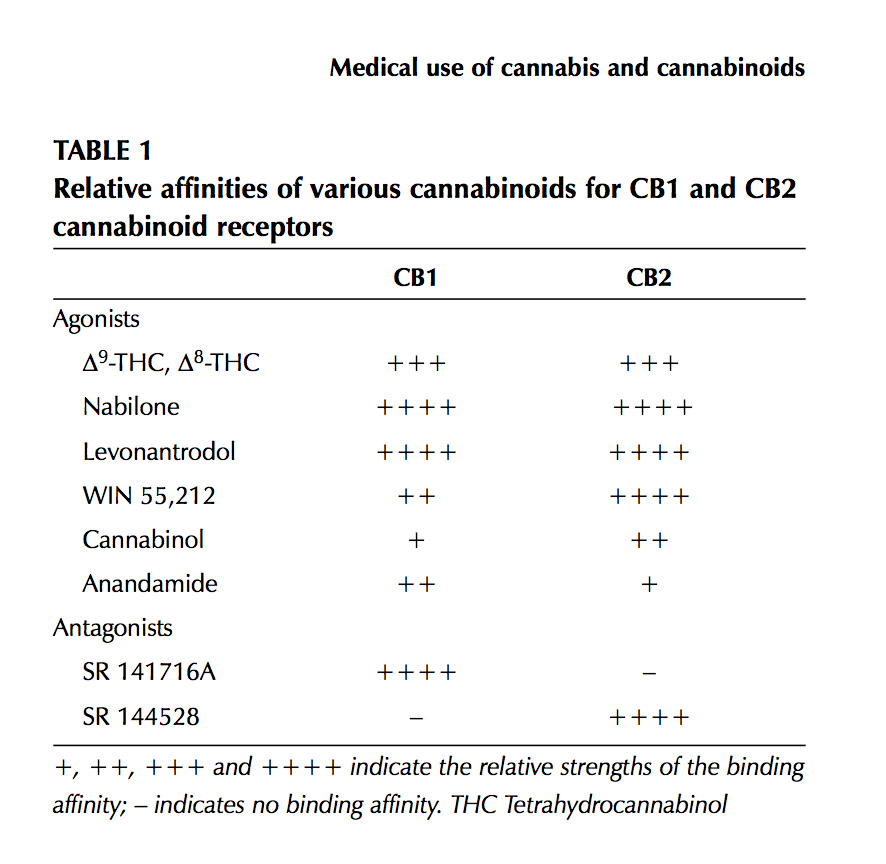SlowToke
New Member
Sue, I see you have posted another video while I was typing. I'll check it out tonight. Hopefully it helps answer some of my questions.
How To Use Progressive Web App aka PWA On 420 Magazine Forum
Note: This feature may not be available in some browsers.
It depends on the amount he's dosing Chewey.
If he's up to a therapeutic dose of 1g a day, he should demethylate every 2 weeks to a month.
For maintenance dosing, 1 every 3 months unless there's some rec using going on. Then, more frequently.
 This is valuable information to know, and something I hadn't uncovered yet, so thank you so very much for sharing that Cajun.
This is valuable information to know, and something I hadn't uncovered yet, so thank you so very much for sharing that Cajun.  This is like a little slice of heaven to me. I've given myself permission to indulge in my love of immersive learning. Sweet! Thank you all for participating.
This is like a little slice of heaven to me. I've given myself permission to indulge in my love of immersive learning. Sweet! Thank you all for participating. 
It depends on the amount he's dosing Chewey.
If he's up to a therapeutic dose of 1g a day, he should demethylate every 2 weeks to a month.
For maintenance dosing, 1 every 3 months unless there's some rec using going on. Then, more frequently.
Let me look into this further and get back to you. You make compelling points. I can see I'll be looking more closely at essential oil makeup today.
Yeah, the BBB is still something of a mystery to me. I need a deeper understanding of the way it works as well as what happens to cannabinoids when they get into the brain. I feel like there's a piece of the puzzle hidden from view yet.
I'm certain that with brain tumors this is definately something you want, but the bio bomb mix should already be doing this, wouldn't you think? There's so much to learn. This study hall is going to help a lot.
Let me try to clarify the gist of my question, because it goes to a bit of a larger issue I've been pondering lately concerning the cannabinoid transport mechanism. So we know from Cajun that any particular illness is dosed best as close as possible to the illness. I think the example Cajun gave was that you wouldn't try to heal your foot by dosing oro-mucosally or sub-lingually. An extreme example, for sure, but it does get to the heart of the matter. And additionally what receptors should the cannabinoids best bind to in order to heal? So this is what occurs to me.
CB1 receptors are mainly found in the CNS, and largely congregated in the brain, while CB2 receptors are spread out much more in the overall body immune system. So if we are trying to heal issues related to stress, anxiety, insomnia, PTSD, neuropathic pain, neuropsychiatric diseases, etc., you would want to dose such that the cannabinoids would easily cross the BBB and target the CNS receptors, right? Maybe? But treating diseases that occur largely in the abdominal/thoracic areas would be best dosed rectally perhaps? We know this is often the recommendation of clinicians working to heal such diseases as liver and prostate cancers, even metastatic ones that are now creating tumors in bone marrow, lymph nodes, lungs, etc. Does this mean we are targeting the CB2 receptors to heal these conditions? Or are the CB1 receptors in the brain/CNS involved as well? Which would suggest crossing the BBB would be important for all diseases.
Okay, so maybe the above is a little simplistic of an analysis, and largely the result of my musings while hiking to the nearest Starbucks during coffee break time at work. But research has reported that we now have a better understanding of the cannabinoid signaling system (Marijuana: Current Concepts, Graydanus, Graydanus, Hawver & Merrick; Front Public Health, NIH, 2013 Oct 10; 1:42), which is leading to research involving the effect of cannabis on the above mentioned diseases. I just wish I had a better understanding of the signaling system, myself, and how it interacts with the endocannabinoid system. And where in the body.
Thoughts, or any links to further sources of information?
I would suggest that treatment should be based more on what you're trying to treat as opposed to where you're trying to treat it. If you look up Sharon Kelly you can find videos about her using cannabis oil to treat her cancer. She went with the suppository style method to treat lung cancer, if the route of administration was relevant to the location I would have thought that smoking/vaping would have been the way to go.
My impression is that in treating cancer you really want the cannabinoids to reach the cancer cells and induce apoptosis. In other diseases you may be trying to modify the immune system through the endocannabinoid system in which case you may not be targeting individual cells. However, these are just my thoughts, I have no evidence to back any of them up so I'm happy to be corrected!
I would expect these factors to be of greater importance when determining the route of administration, no?
And to throw another spanner in the works...
I've been trying to find which oils are highest in long-chain triglycerides/fatty acids and according to the Wikipedia article on fatty acids (so I'm not sure how accurate it is) LCFAs can't cross the blood-brain barrier! So does this mean using an oil high in LCFAs would be problematic for a brain tumor? Or does the brain tumor develop it's own blood supply and subsequently there's no problem?
There's too many variables!

 Yes, I've a very healthy imagination. Lol!
Yes, I've a very healthy imagination. Lol!It depends on the amount he's dosing Chewey.
If he's up to a therapeutic dose of 1g a day, he should demethylate every 2 weeks to a month.
For maintenance dosing, 1 every 3 months unless there's some rec using going on. Then, more frequently.




Tumors do develop their own blood supply, but you raise a good point about the LCFAs not being able to cross the blood-brain barrier and how that might impact carrier oil choice. I don't recall coming across any mention of a specific oil choice for brain tumors. circuit was treating a brain tumor. Hmmmmm.... I believe he was using coconut oil, but I'm not certain. It's on my list of things to chase down.
thoughts of an obsessive researcher
It just hit me that what I personally need to understand is the benefits of having the cannabinoids in the
- Central Nervous System (on that side of the blood-brain barrier)
- Circulatory Sstem
- Lymphatic System
Also, once in those systems do the cannabinoids remain within those systems or do they migrate throughout the three systems seeking out cells?
I don't know if that made sense to you guys, but it did to me.
Considering that THC is not very effective at attaching to receptors it suggests more opportunity for locating tumor cells. Of course the other components obviously play an important role in the attachment.....

My understanding is that smoking/vaping as a dosing method is not able to achieve the concentration of cannabinoids necessary to achieve healing when dealing with cancer. Plus smoking is very efficient at bridging the blood brain barrier which would result in a higher level of euphoria than with, say, suppositories.
From what I have learned here, it seems both the location of the illness and the type of illness come into play when considering the right dosing method. For instance, CCO suppositories for prostate/liver/lung cancer, and tacking for brain tumors and perhaps esophageal cancer. And smoking is better to treat PTSD where bridging the BBB is important. At least that's how it looks to me based on what I've learned. No direct experience with treating anything yet, so I could be wrong.
Sue, coconut oil makes sense for brain tumors, as it is a MCFA. I also just checked my notes from Cajun's cancer thread, and LCFAs were recommended for prostate cancer. Makes sense to me, as there doesn't seem to be a need for the brain to be involved to treat that cancer. In fact, it's better if it isn't, to reduce the psychoactive effect.
Results:
1.1 The results indicate that in rats the Piperine-PNL elevated the bioavailability of CBD by 6 fold (Table 13, Fig. 15). The contribution of the Piperine component was 2 fold increased bioavailability due to its phase-II metabolism inhibition.
AUC (h*ng/mL) Cmax (ng/niL)
90±21 39±8 CBD
300±95 (*) 137±43 (*) CBD-PNL
570±23 (*" ) 170±13 (*) CBD-Piperine-PNL


Having looked back at our posts I think we are saying similar things in different ways! Admittedly, I didn't know whether vaping could be used for treating cancer in any shape or form, I was just trying to use it as a (very poor) example.
However here I see something I don't quite get. On one hand tacking is for brain tumors and on the other hand MCFAs are for brain tumors? Can you tack using CCO in a carrier oil? Or is it just different users suggesting different methods for treating the same condition?
I've been spending a lot of time trying to understand what's going on with these carrier oils. I'm not sure if you guys find the same thing happens but when I start searching for something I open a bunch of tabs then start going through them, then find something else interesting to search for in one of them, open a bunch of new tabs, forget why I opened the first bunch of tabs, close them, realise there was something important in one of them, go back for ages trying to find it again, and so on so I'm not sure how much of this I can put together right now... (Is there a facepalm emoticon?!)

We don't have to get all the information into one post fookinel.

It set me to thinking about how some doctors treating patients with cannabis are coming to the conclusion that a better therapeutic level might be somewhere in the 300mg a day dose instead of the one gram a day everyone's pushing for and straining resources to reach.

fookinel,
I checked Circuit's posts, and he is using CCO with a coconut oil carrier in capsule form. So he's not tacking at all. You're right, with tacking there wouldn't be a carrier oil at all.
I've heard this as well, suggestions that the 1 gram/day may not really be needed. Of course I don't need to point out that bioavailability needs to be considered
I assume that they're being taken orally and not as a suppository?
In the summer of 2015, a US laboratory performed some of the first tests ever known to be conducted, on cannabidiol absorption into human intestinal cells. The results were astonishing. Utilizing a mixture of hemp oil, black tea and select lipids, and processed with a patent-pending technological method, resulted in intestinal tissue CBD permeability 325% higher than CBD mixed with black tea and water. And when that same mixture of hemp oil, black tea and select lipids, and processed with the patent-pending technological method is compared to the absorption of CBD and water alone, the absorption levels into the human intestinal cells rose to a 499% improvement.
 This page is a patent that discusses microemulsions and gives an example of one for use with ibuprofen...
This page is a patent that discusses microemulsions and gives an example of one for use with ibuprofen...